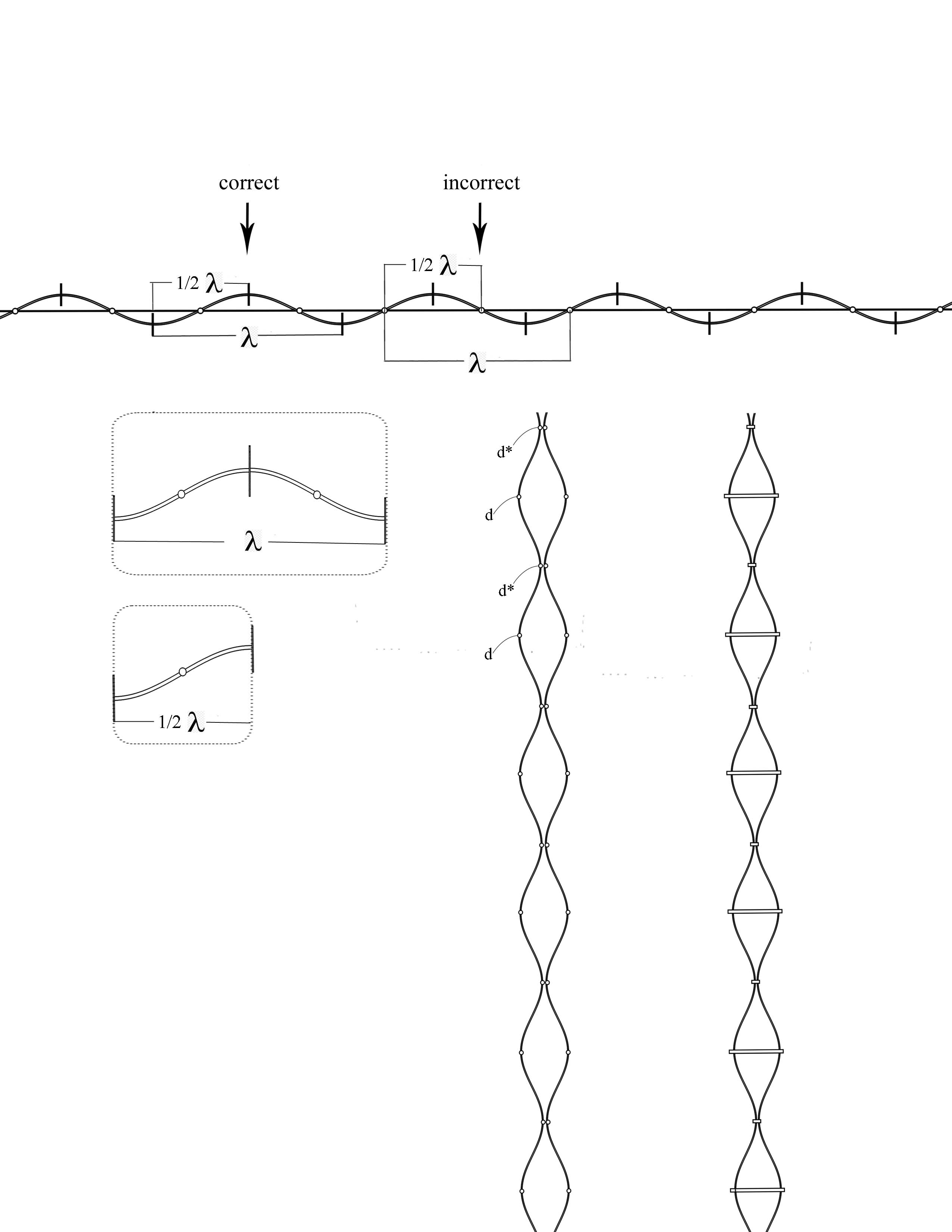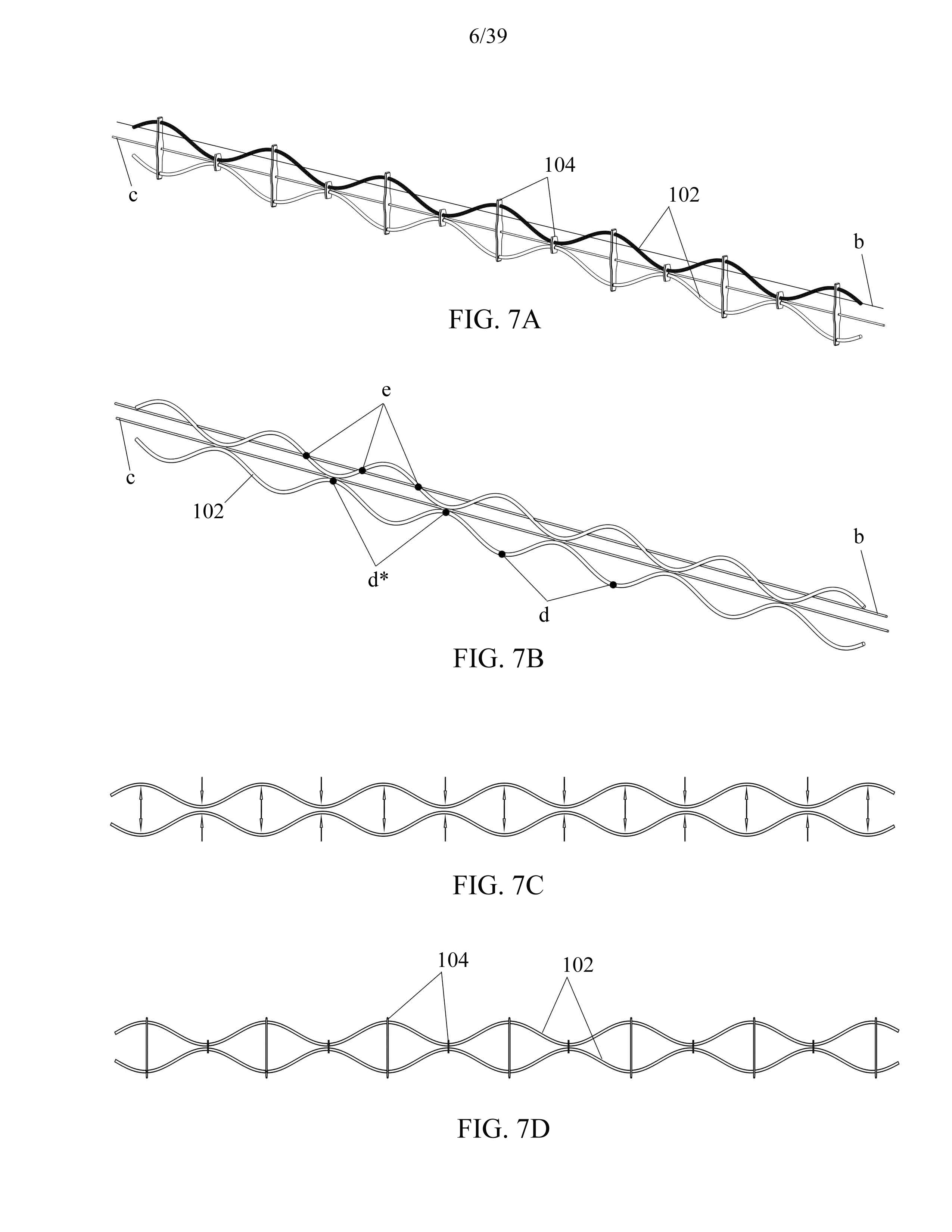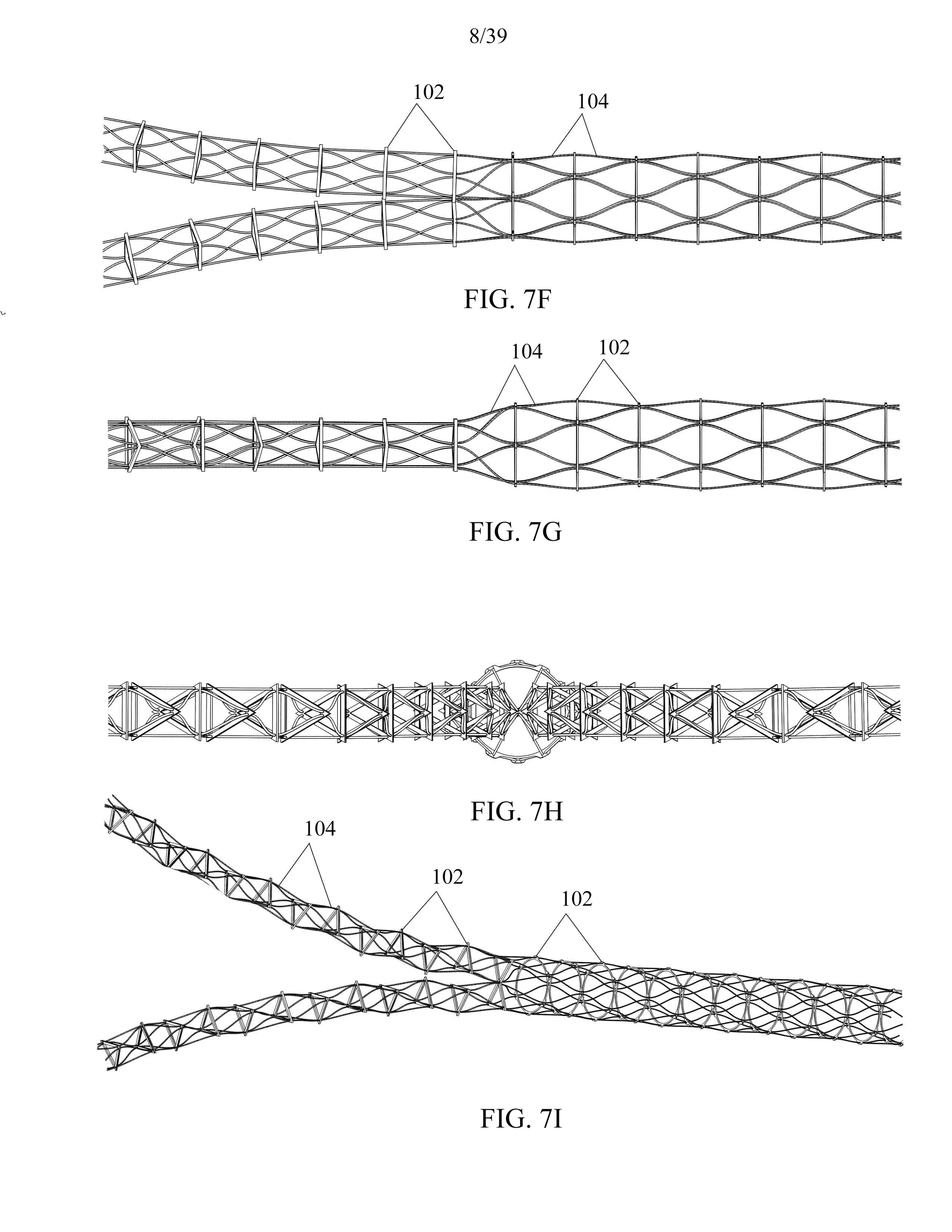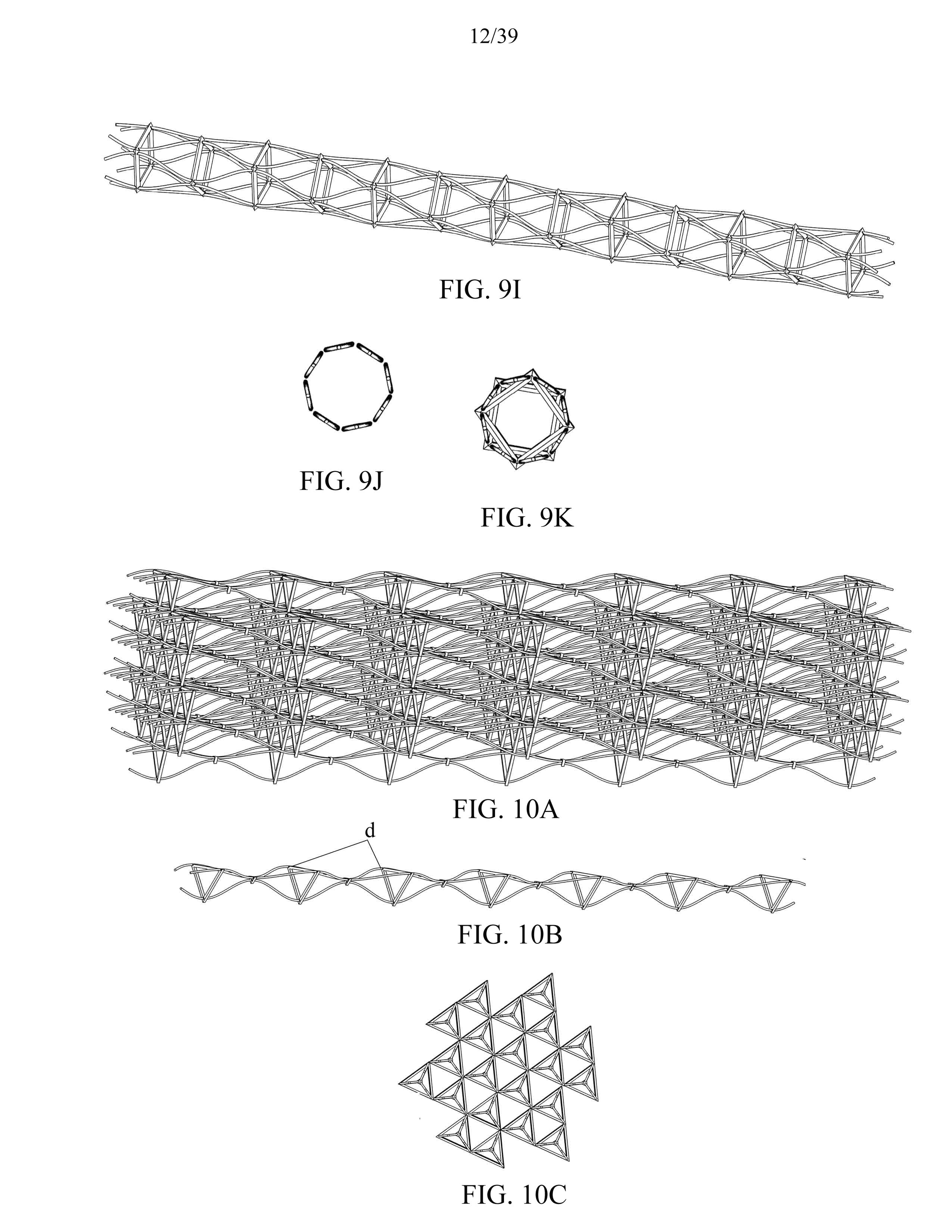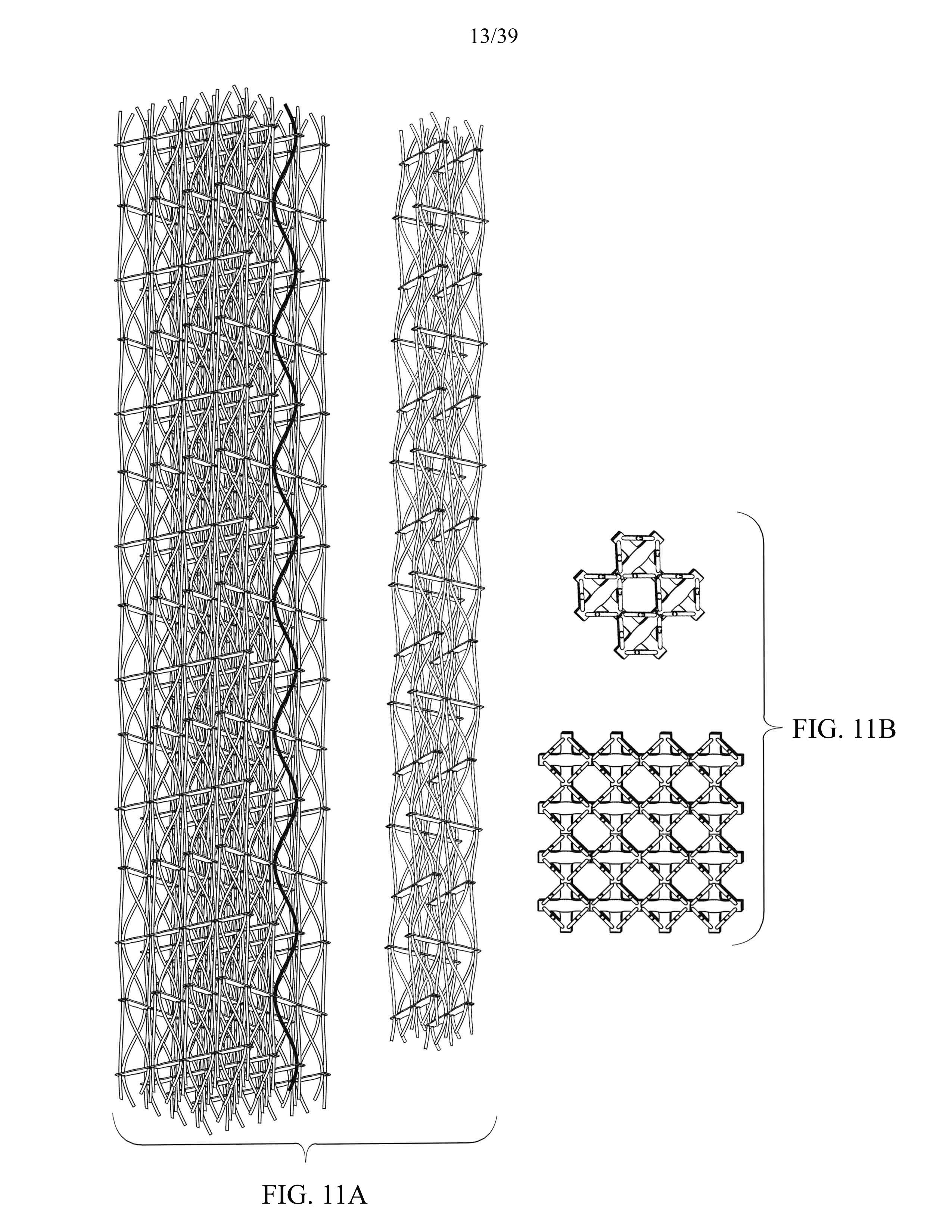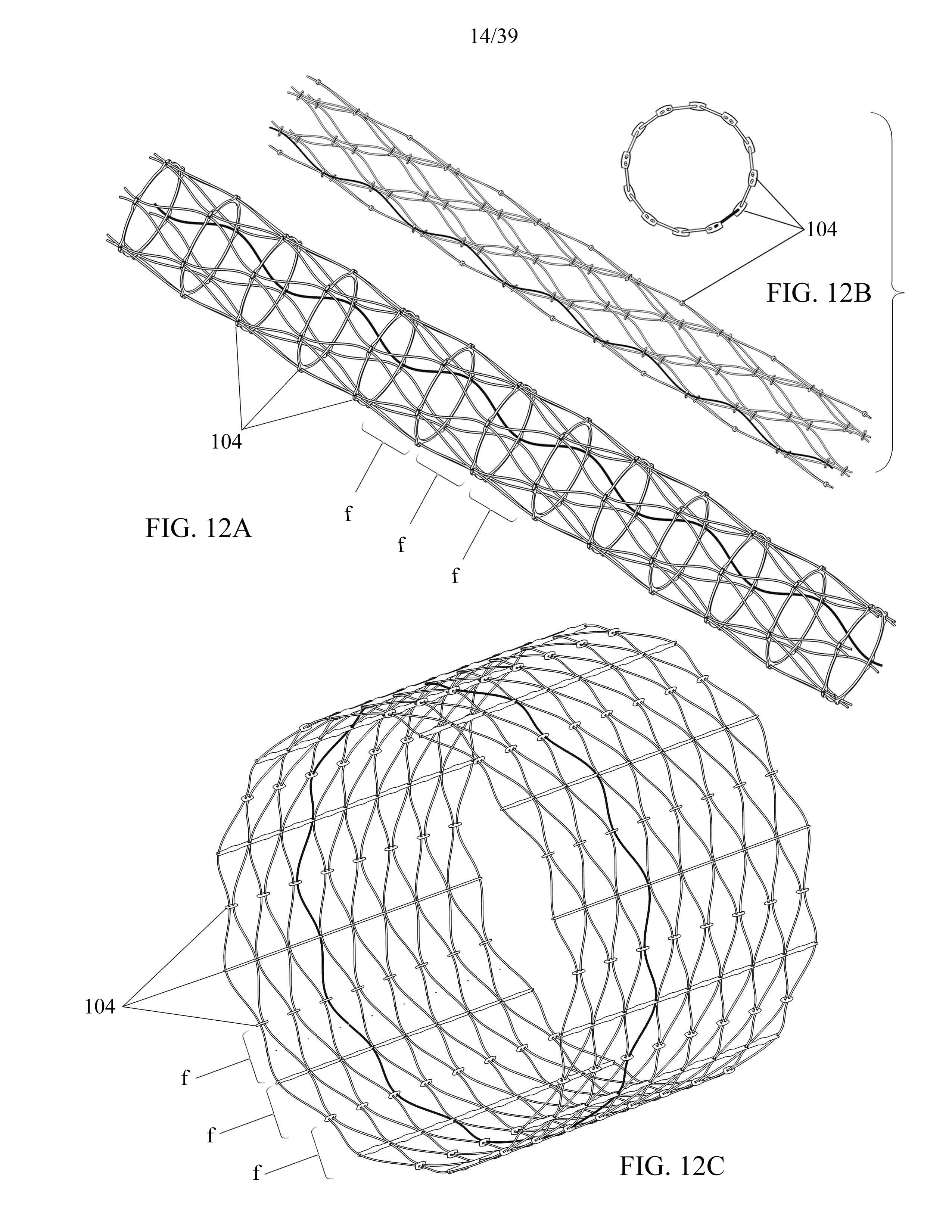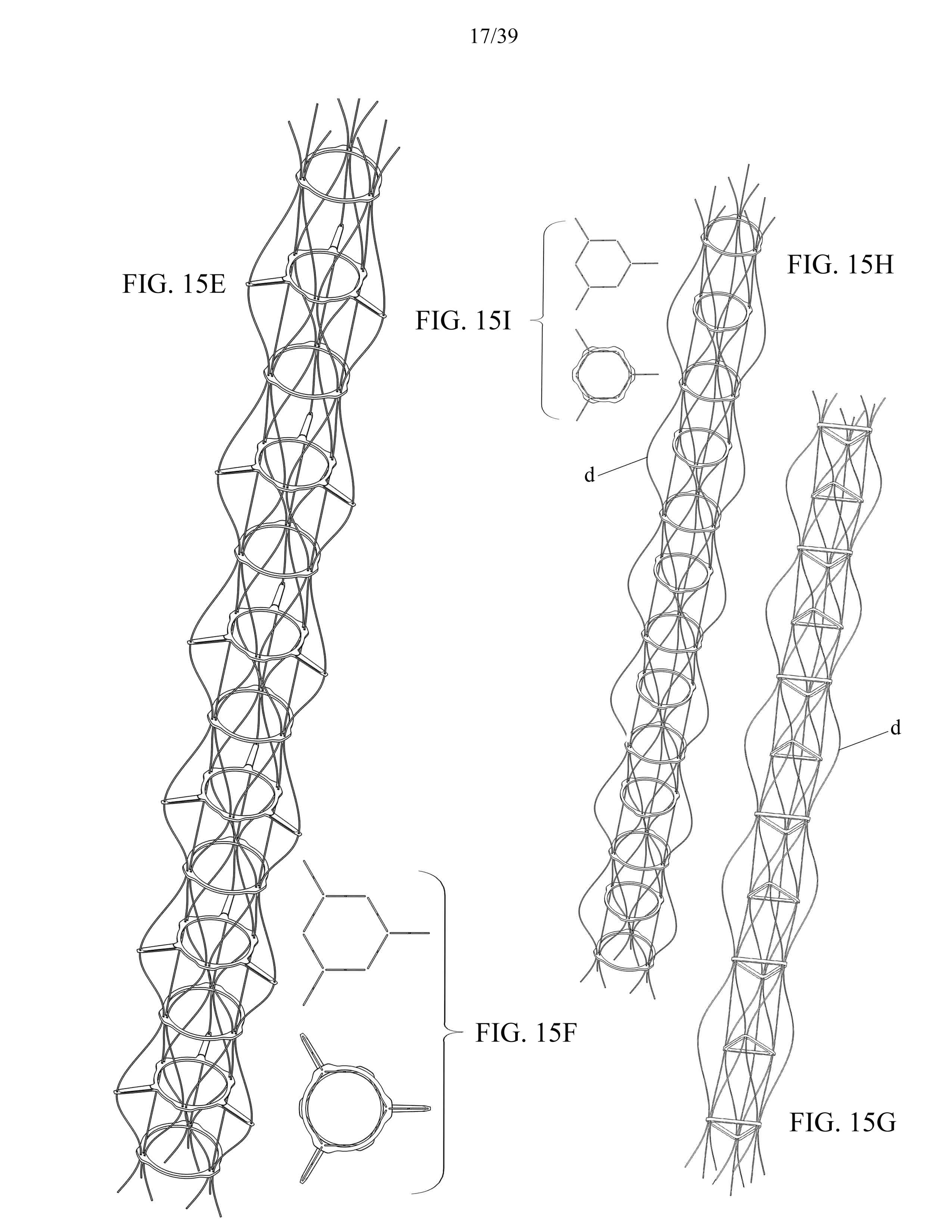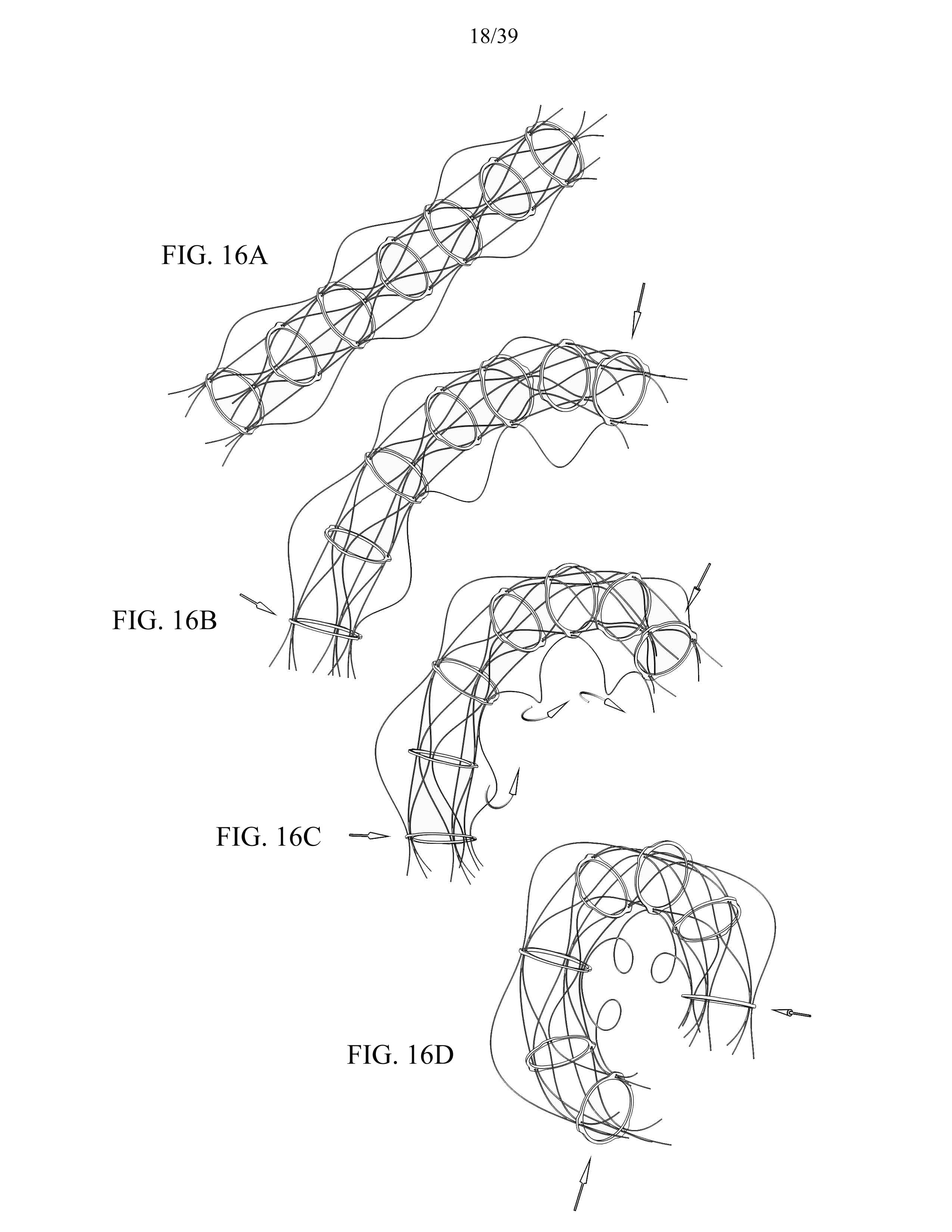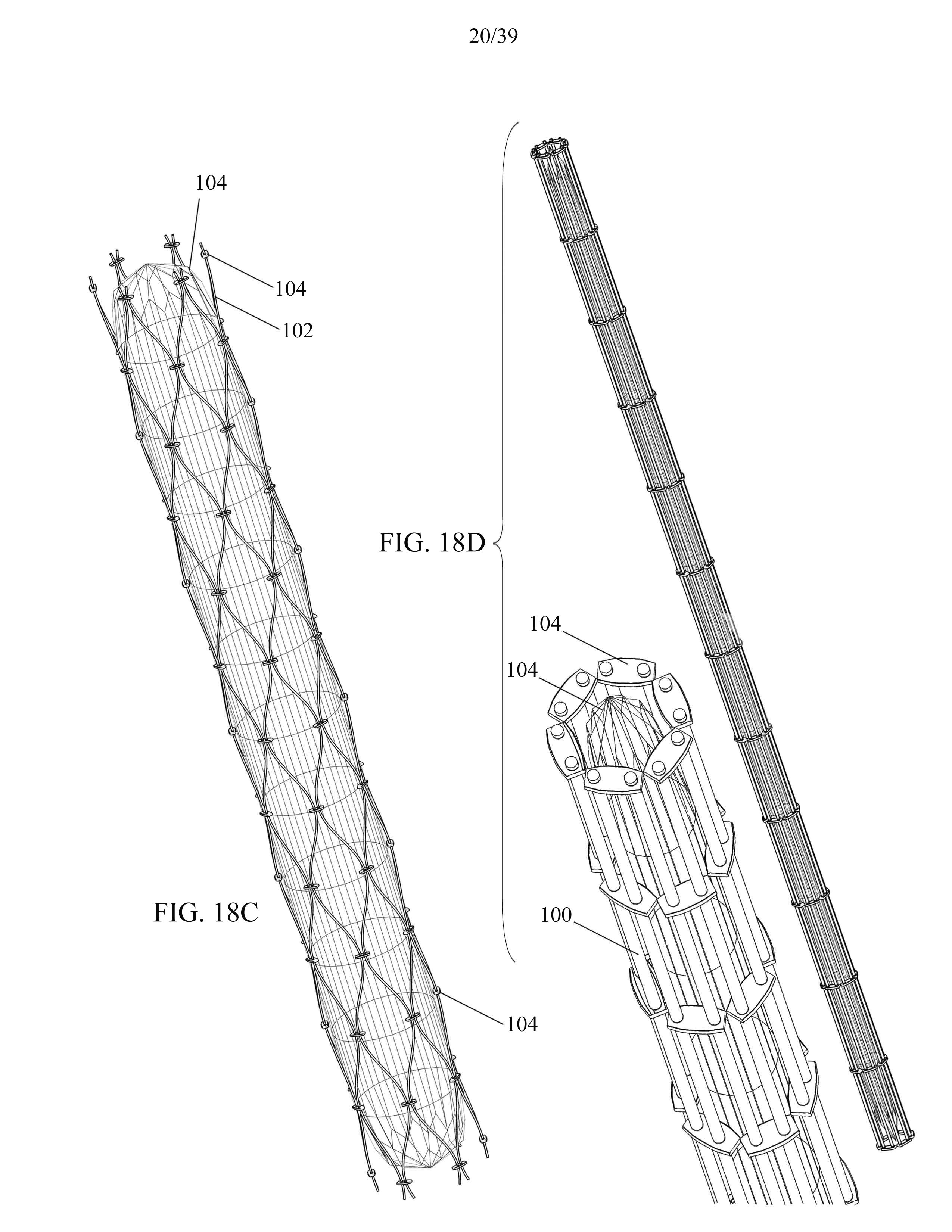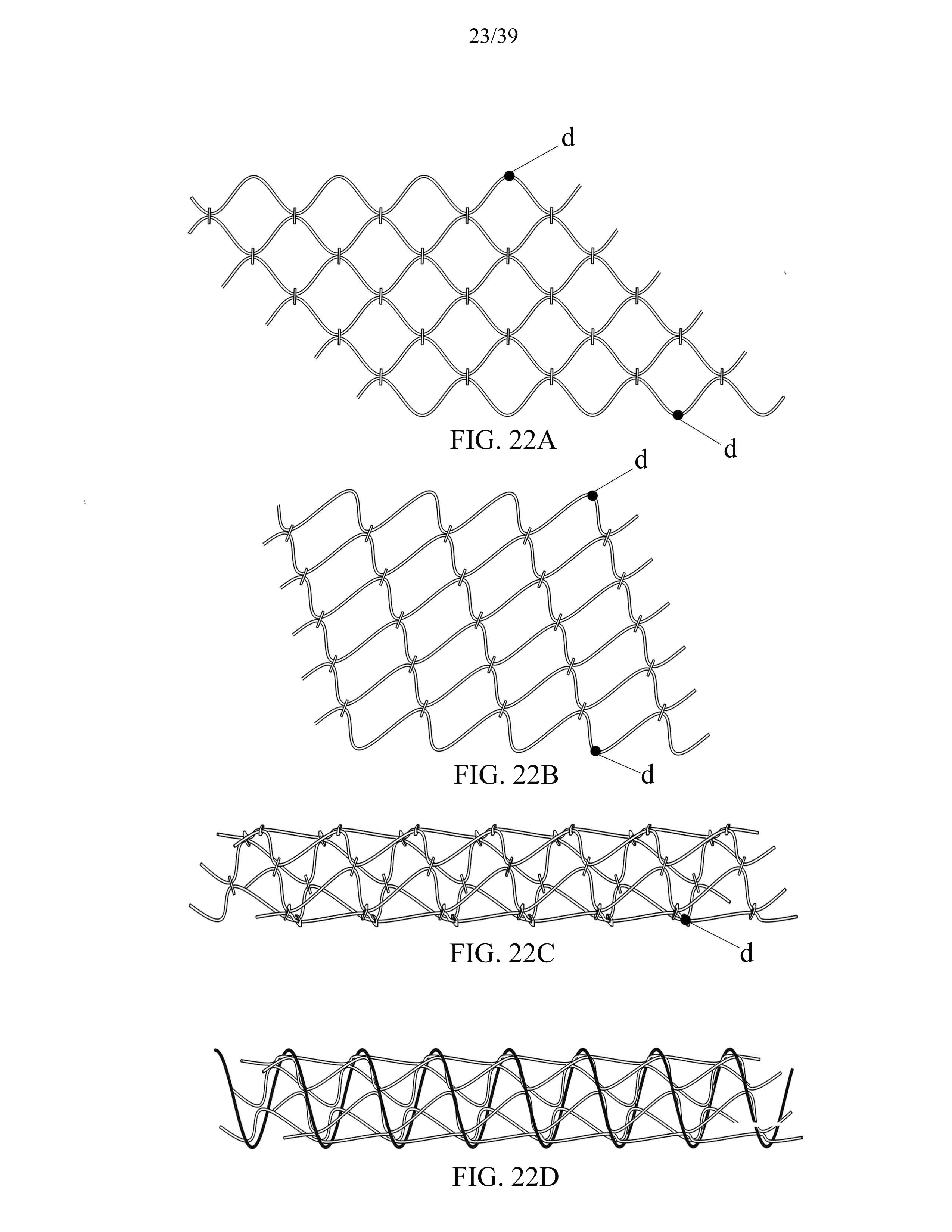Sinusoidal Assemblies
Pre-stressed sinusoidal shaped member units and support member units are parts forming assemblies. Relaxed material elements are elastically deformed into pre-stressed sinusoidal shaped members having flexural properties. Support members function to maintain the sinusoidal shaped members deformed state. The sinusoidal shaped members and their dependent support members are assembled into curvilinear pre-stressed structural arrangements containing elastic potential energy that is ideally equal to the work done by the forces that formed the pre-stressed structure. The structure’s pre-stressed sinusoidal shaped members are naturally adapted to use materials having exceptional toughness, strength and flexural properties.
The structure’s pre-stressed state intends to enhance its mechanical and/or structural performance. The number, density and possible geometric configurations of the discrete sinusoidal shaped member units and discrete support members units within an assembly is vast.
Sinusoidal pre-stressed composite material assemblies may function on their own as a structure, a mechanical device or be encased in cellular solid material shapes including those formed from foams and micro-lattices in lieu of cement products; therefore, maintaining the high performance composites’ weight advantage. Advances in composite material science will allow the pre-stressing of assemblies to become sufficiently advanced to make its use common practice in a range of applications.
The engineering of an assembly designed to exhibit flexural torsion buckling would have flexural regions containing flexure elements that function as design flexures having the ability to elastically buckle, rather than suddenly fail when subjected to forces that cause large deflections.
The use of slender members is becoming increasingly important and popular for the following reasons:
(1) the development of high performance composite materials,
(2) improved methods of dimensioning and designing with rational and reliable simulation procedures,
(3) innovative structural concepts – especially the engineering environment’s expectations for creative products.
Sinusoidal wave forms emerge as one of nature’s primary methods of energy storage and transfer. Waves generated in matter can be compared to waves elastically deformed from matter.
Because a wave form is an effective vehicle for the storage of elastic energy and is a shape having length and width, a sinusoid would naturally be an efficient shape to model the deformation and pre-stressing characteristics of an elastic material.
The similarity in the properties of standing sinusoidal waves and elastically deformed sinusoidal wave members would indicate that a sinusoid is an exemplary shape when used to store elastic potential energy in a material member having length and transverse section.
